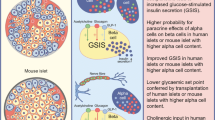Abstract
Mouse neuroblastoma x rat glioma hybrid NG108-15 and mouse neuroblastoma x embryonic hamster brain NCB20 cells were transfected with a construct containing a human β2 adrenoceptor cDNA under the control of the β actin promoter. Clones were selected on the basis of resistance to geneticin sulphate and those expressing a range of levels of the receptor expanded for further study. Membranes from a clone of NG108-15 cells expressing high levels of the receptor (βN22) but not one expressing only low levels of the receptor (βN17) exhibited a markedly elevated adenylyl cyclase activity when measured in the presence of Mg2+ compared to wild type cells. This was not due to elevated levels of the adenylyl cyclase catalytic moiety however as there was no difference in these membranes when the adenylyl cyclase activity was measured in the presence of Mn2+. The elevated basal activity was partially reversed by addition of the β-adrenoceptor antagonist propranolol. Agonist activation of βN22 but not βN17 cells led to a large selective down-regulation of cellular Gsα levels which was independent of the generation of cyclic AMP. Isoprenaline stimulation of adenylyl cyclase activity and of the specific high affinity binding of [3H] forskolin was achieved with substantially greater potency (some 30 fold) in βN22 cell membranes than in βN17. By contrast agonist activation of the endogenously expressed IP prostanoid receptor caused stimulation of adenylyl cyclase and stimulation of high affinity [3H] forskolin binding which was equipotent in each of βN22, βN17 and wild type NG108-15 cells. Agonist activation of the IP prostanoid receptor caused an equivalent degree of Gsα down-regulation in each cell type. Expression of an epitope tagged variant of Gsα in NG108-15 cells resulted in prostanoid agonist-induced down-regulation of this polypeptide in a manner indistinguishable from that of wild type Gsα. Isolation of clones of NCB20 cells expressing high levels of the β2 adrenoceptor also resulted in a specific agonist-induced down-regulation of Gsα.
Access this article
We’re sorry, something doesn't seem to be working properly.
Please try refreshing the page. If that doesn't work, please contact support so we can address the problem.
Similar content being viewed by others
References
Sibley DR, Lefkowitz RJ: Molecular mechanisms of receptor desensitization using the β-adrenergic receptor-coupled adenylate cyclase system as a model. Nature (London) 317: 124–129, 1985
Dohlman HG, Thorner J, Caron MG, Lefkowitz RJ: Model systems for the study of seven-transmembrane segment receptors. Ann Rev Biochem 60: 653–688, 1991
Milligan G: Agonist regulation of cellular G protein levels and distribution: mechanisms and functional implications. Trends Pharmacol Sci 14: 413–418, 1993
Milligan G, Green A: Receptor-mediated down-regulation of cellular G-protein levels as a mechanism for the development of sustained heterologous desensitization. In: D.R. Sibley, M.D. Houslay (eds). Regulation of cellular signal transduction pathways by desensitization and amplification. Wiley and Sons, Chichester, 1994, pp 233–248
McKenzie PR, Milligan G: Prostaglandin E1-mediated, cyclic AMP-independent, down-regulation of Gsα in neuroblastoma x glioma hybrid cells. J Biol Chem 265: 17084–17093, 1990
Adie EJ, Mullaney I, McKenzie FR, Milligan G: Concurrent downregulation of IP prostanoid receptors and the α subunit of the stimulatory guanine nucleotide binding protein (Gs) during prolonged exposure of neuroblastoma x glioma cells to prostanoid agonists Quantitation and functional implications. Biochem J 285: 529–536, 1992
Kelly E, Keen M, Nobbs P, MacDermot J: Segregation of discrete Gsα-mediated responses that accompany homologous or heterologous desensitization in two related somatic hybrids. Br J Pharmacol 99: 306–316, 1990
McKenzie FR, Adie EJ, Milligan G: Prostanoid-mediated down-regulation of Gs in NG108-15 cells. Biochem Soc Trans 19: 81S, 1991
Adie EJ, Milligan G: Agonist regulation of cellular Gsα-subunit levels in neuroblastoma x glioma hybrid NG108-15 cells transfected to express different levels of the human β2 adrenoceptor. Biochem J 300: 709–715, 1994
Adie EJ, Milligan G: Regulation of basal adenylyl cyclase activity in neuroblastoma x glioma hybrid, NG108-15, cells transfected to express the human β2 adrenoceptor. Evidence for empty receptor stimulation of the adenylyl cyclase cascade. Biochem J 303: 803–808, 1994
Limbird LE, Hickey AR, Lefkowitz RJ: Unique uncoupling of the frog erthyrocyte adenylate cyclase system by mangenese. Loss of hormone and guanine nucleotide-sensitive enzyme activities without loss of nucleotide-sensitive, high affinity agonist binding. J Biol Chem 254: 2677–2683, 1979
Milano CA, Allen LF, Rockman HA, Dolber PC, McMinn TR, Chien KR, Johnson TD, Bond RA, Lefkowitz RJ: Enhanced myocardial function in transgenic mice overexpressing the β2-adrenergic receptor. Science 264: 582–586, 1994
Schutz W, Freissmuth M: Reverse intrinsic activity of antagonists on G protein-coupled receptors. Trends Pharmacol Sci 13: 376–380, 1992
Gotze K, Jakobs KH. Unoccupied β-adrenoceptor-induced adenylyl cyclase stimulation in turkey erythrocyte membranes Eur J Pharmacol Mol Pharm Section 268: 151–158, 1994
Kim G-D, Adie EJ, Milligan G: Quantitative stoichiometry of the proteins of the stimulatory arm of the adenylyl cyclase cascade in neuroblastoma x glioma hybrid, NG108-15 cells. Eur J Biochem 219: 135–143, 1994
Levis MJ, Bourne HR: Activation of the α subunit of Gs in intact cells alters its abundance, rate of degradation, and membrane avidity. J Cell Biol 119: 1297–1307, 1992
Mullaney I, Milligan G: Equivalent regulation of wild type and an epitope-tagged variant of Gsα by the IP prostanoid receptor following expression in neuroblastoma x glioma hybrid, NG108-15, cells. FEBS Lett 353: 231–234, 1994
Author information
Authors and Affiliations
Rights and permissions
About this article
Cite this article
Milligan, G., Kim, GD., Mullaney, I. et al. Regulation of cellular Gsα levels and basal adenylyl cyclase activity by expression of the β2-adrenoceptor in neuroblastoma cell lines. Mol Cell Biochem 149, 213–216 (1995). https://doi.org/10.1007/BF01076579
Issue Date:
DOI: https://doi.org/10.1007/BF01076579




